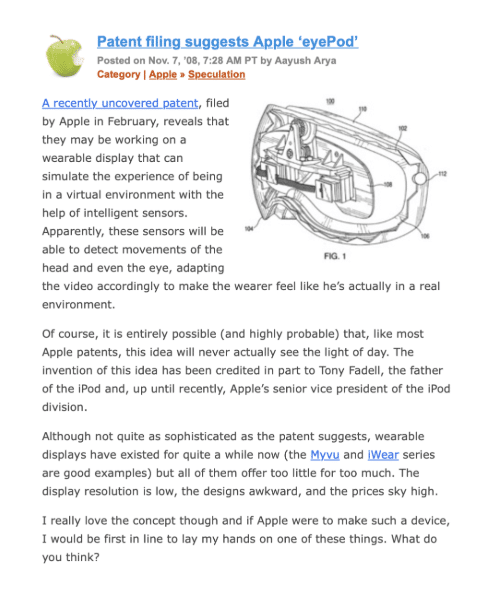Apple’s Vision Pro headset has been hailed as a groundbreaking device in the augmented reality space, but its journey to market was anything but quick. A forgotten 2008 Apple patent reveals how long the company had been developing the concept before unveiling the Vision Pro in 2023. The patent, discovered by Macworld’s Dan Moren, showcases a device strikingly similar in design and functionality to the final Vision Pro product. This revelation showcases Apple’s characteristic approach: taking its time to perfect products before entering new categories.
The 2008 patent describes a wearable display equipped with intelligent sensors capable of tracking head and eye movements. These sensors would adapt visuals to simulate an immersive virtual environment, an idea that would eventually become a cornerstone of Vision Pro’s spatial computing capabilities. The accompanying diagrams depict a design remarkably close to the curved visor of the final product, demonstrating Apple’s early vision for the device. At the time, however, the technology required to bring such a product to life, including advanced microdisplays, didn’t exist.

Apple’s methodical development process is not new. The tech giant has consistently been a late entrant into various markets, from personal computers to smartphones, yet it has a history of redefining these categories upon entry. This philosophy is emphasized by its decision to wait until it can deliver a product that feels not just competitive but transformative. With Vision Pro, the development spanned at least 15 years, a timeline that echoes the company’s patience in refining both the hardware and the supporting ecosystem to meet its high standards.
Despite its technical achievements, the Vision Pro faces significant hurdles. The $3,499 price tag has limited its appeal, and reports suggest Apple may have scaled back production expectations. While rumors of a second-generation Vision Pro with an M5 chip are circulating, the anticipated lower-cost version of the headset seems to be delayed until at least 2027. Analysts like Ming-Chi Kuo attribute this delay not only to pricing challenges but also to the lack of compelling use cases that would justify the purchase for most consumers.
(via Macworld)
Subscribe to our email newsletter to get the latest posts delivered right to your email.

